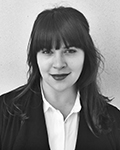2016
Juliet S. Sperling
- Doctoral Candidate
- University of Pennsylvania

Abstract
Moving images were an unavoidable force in nineteenth-century American visual culture. Layered flap books, spinning volvelles, and hidden-paneled prints, which animated at the touch of a hand, circulated among emerging mass audiences. These metamorphic images sought to capture motion, time, and volume within a flat, static surface’s limits—aims shared by period painting. Tracing moments of intersection between the two genres reveals that by cinema’s emergence around 1895, viewers were attuned to movement’s nuances, and well-practiced in mentally and physically bridging the moving and the still image. An analysis of works by Raphaelle Peale, David Claypoole Johston, and Winslow Homer reveals the insufficiencies of long-held narratives of modernism and flatness, surface and subject, in understanding the dynamic exchange between painting and visual culture in the nineteenth-century United States.

